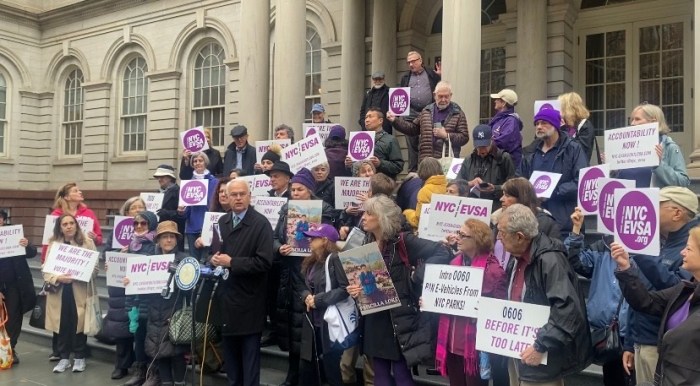By Philip Newman
The more questions the two Transit Authority officials answered, the more impatient with them some City Council members became at a public hearing held last Thursday before the Council's Transportation Committee. “You're the top two people in charge of running the subways and you can't tell us when the remaining relay rooms are going to be protected against a fire when a report – your own report from six years ago – said that all the 198 stations (relay rooms) need to be fortified against fire,” thundered City Councilman John Liu (D-Flushing). “You can't tell us when the remaining 40 are going to be protected.” He added, “This is exactly the kind of non-accountability that we will no longer tolerate from the MTA and New York City Transit.”Taking the heat as lead-off witnesses at the hearing were Michael Lombardi, senior vice president of the Department of Subways of the New York City Transit Authority, and Keith Hom, chief of the Division of Operations Planning of the subways. They had been invited by Liu, chairman of the Transportation Committee, to testify on the on the implications of the Chambers Street subway fire. The fire destroyed a signal relay room at the lower Manhattan station, disrupting service on the A line to Lefferts Boulevard, Howard Beach and the Rockaways and shutting down the C lines. Nearly 600,000 riders, including many from Queens, were left scrambling for alternate routes. Transit Authority President Lawrence Reuter brought consternation to thousands of transit riders when he predicted C line service would be out for three to five years and A line service sharply reduced over the same period, then revised his estimate to six to nine months. Without warning or advance explanation most of the service was restored Feb.2.Lombardi said the TA had modernized and installed fire detection and suppression systems in 158 of the 198 signal relay rooms in subway stations at a cost of $2.4 billion. He said the fire that destroyed the Chambers Street station relay room was the result of a 75-year-old cable with layers of paraffin, cotton and rubber insulation that made it act like fuse. The remaining such relay rooms have the same outdated cables dating back to the early 1930s.Lombardi said the fire originated outside the room, but the cable carried it inside the locked compartment, destroying masses of electrical circuitry.”At this current moment, I can't tell you how soon those 40 (signal relay rooms) are going to be done,” Lombardi said. Asked why it takes so long to modernize relay rooms, Lombardi said it was money, the fact that the job is made more difficult because the subway runs 24 hours and because a limited number of workers can perform the intricate work required. At the end of the testimony from Lombardi and Hom, Liu told them that he had invited Reuter to the hearing and had received confirmation he would be there. “Where is he?” asked Liu. Lombardi and Hom said they did not know. Ed Watt, secretary-treasurer of Transit Workers Union, Local 100, said his union members hoped the Council Transportation Committee would “address the level of preparedness at the TA to cope with fires and other emergencies.””In the typical day, we have 30 or 40 fires in the subway system,” Watt said. “Undoubtedly, the Transit Authority will hasten to assure you that most of these are small fires with little impact. But how many big fires do we need for fires to be recognized as a priority?” Queens Council members at the hearing included Peter Vallone Jr. (D-Astoria), Joseph Addabbo Jr. (D-Howard Beach) and Helen Sears (D-Jackson Heights).Reach contributing writer Philip Newman by e-mail at news@timesledger.com or call 718-229-0300, Ext. 136.


































